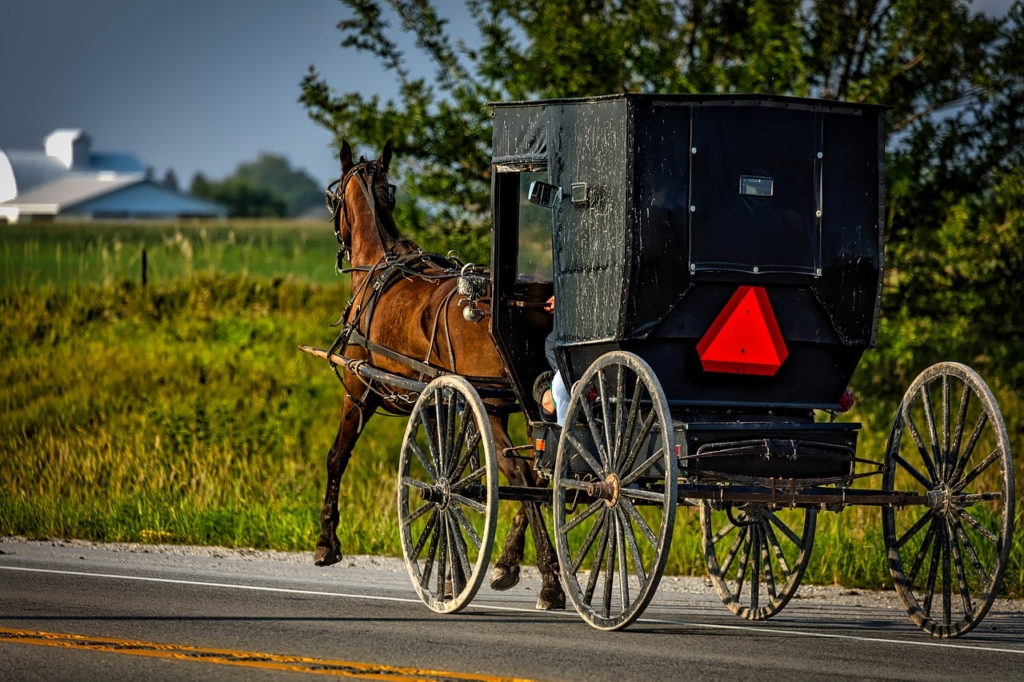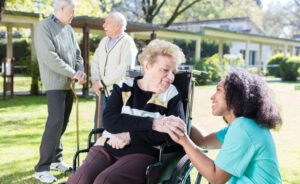Aging in place within the comfort of home is a vision many seniors cherish, and as the year 2024 unfolds, it’s a trend that’s gathering momentum. By the year 2030 all baby boomers will be 65 years of age or older. The choice to stay in a well-loved home as opposed to moving to an assisted living facility involves extensive preparation and decision-making. This comprehensive guide seeks to steer seniors and caregivers through the process of determining if aging in place is right for them, and if so, how to thoroughly plan for it—including creating an essential ‘Plan B’.

Why Aging in Place Is Becoming a Trend
The increasing preference for aging in place is not unexpected. Our growing elderly population, coupled with advancements in home health care and smart technology, has made this option more accessible and comfortable than ever before. The familiarity and comfort of one’s own residence can bolster mental and emotional well-being, often a decisive factor for many seniors. Armed with the right information, support, and modifications, living out the golden years at home is a conceivable reality for many.
Demographic shifts show a substantial increase in the senior population, coupled with a stronger preference for independence. “Getting involved when you’re still mentally and physically active will give you the best chance of living in your own home longer,” Dr. Hartmann says. “You benefit at any age when you have a strong community and social network.”
In your resource section we have included an article where Dr. Harmann was quoted regarding the “Village Model” to age in place. To learn more about the Aging in Place as one of the top 3 trends in senior care this year consider joining us for our webinar to explore these trends and learn how they may impact your family down the road or sooner than you might think. You can register HERE.
Many cultures already have the “aging in place” model as a part of their lifestyle. Many cultures or subcultures in the Asian, Hispanic, and the Amish all have living models such as multigenerational living to care for their aging loved ones. Speaking of Multigenerational living, this is also one of the top 3 trends in senior care we will be discussing at the upcoming free webinar. The challenge is that many of our families are spread out over multiple states and many don’t even live in the same town as their parents do any longer.
We live in a very rural Amish community and 3 of our 4 surrounding neighbors are Amish. I have had some Amish hospice patients in the past and was able to learn much about their way of life and what is important to them.
Aging in place is the only option for them. They are a closed community that takes care of their own. My Amish patient had a brain tumor and her husband was in a wheelchair with M.S. When my patient was no longer able to keep up with the chores, cooking, caring for her husband and the children, a plan was put into place to meet their needs.
The bishop and governing body of their community put together a schedule where other women in the community were “sent” to care for this family. Some days as many as 3 women and men came to get the chores done, care for both my patient and her husband, cook, clean and make sure the kids were taken care of. The older children also took part and had their chores and farm work to complete as well. This could also be an example of the “Village Model” of aging in place.

Steps to Consider When Choosing Aging in Place
When opting to age in place, numerous considerations come into play. Making a home more accessible may involve modifications such as installing grab bars, walk-in tubs, (not a huge fan of) and smart home technologies. Central to the planning process is the evaluation of health care needs and the long-term feasibility of remaining at home, which might necessitate the support of professional caregivers.
The Importance of Having a Plan B
Circumstances change, especially as one ages, and a well-thought-out Plan B is crucial. Things change and health can change in a moment’s notice. What was believed to be a well thought out plan has now become a wish. A Plan B is crucial so no one is caught trying to make a decision in a crisis situation. What would this Plan B look like? Assisted Living, maybe a nursing home or would moving in with the kids be an option?
The Role of Patient Advocates in Preparing for Aging in Place
Navigating the planning stages can be complex, and patient advocates play a pivotal role. Our role as a patient advocate is to help seniors and their families navigate the complex healthcare and home care options, and ensure they receive the support that best meets their needs while supporting their healthcare goals and plan to age in place.
Pros and Cons of Aging in Place
Pros:
- Comfort of living in a familiar environment. May increase some safety knowing their way around the house.
- Familiar Environment: Remaining in a beloved setting can enhance well-being and happiness.
- Opportunity to maintain greater independence
- Potential continuity of neighborhood and community ties
- Personalized Care: Tailored support is possible from professionals or family members.
Cons:
- Potential isolation and loneliness
- The financial burden of home modifications and in-home care can be significant
- Care Costs: In-home care assistance can be expensive, depending on needs and duration.
- Safety concerns if the home isn’t properly adapted
- As time goes on the ability to make sure their daily needs are met as well as possible errands and home upkeep that needs to be attended to.
Case Studies
One of our clients early on was diagnosed with Alzheimer’s Disease. The husband’s one goal was to keep her home with him and no nursing home or assisted living communities were an option. He asked us if we could help him accomplish this. We knew it might be a tough promise to keep but we accepted. We jumped on the bandwagon to keep her home with her husband as long as humanly and as safely as possible.
Her family providing care consisted of two sons that lived 4-5 hours away and 2 grandkids in their early 20’s. These grandparents were their guardians after their mom passed away when they were in grade school. This was a heavy burden for these kids to carry.
Early on it wasn’t hard. However, she traveled through the stages very quickly over a 9 month period. To keep our promise we had to install locks on doors and windows. Alarms, we had to lock up any type of cleaning fluid and things like shampoo and other liquids that she would attempt to ingest, eat and drink. We had to lock up the medications as well.
She developed behavior concerns with angry outbursts and physical aggression. We had to transition to agency caregivers who had experience in dementia care. We had used some private caregivers previously to help keep some costs down for the family. We ended up with 24/7 caregivers, a mix of private (those that knew her well now) and agency caregivers. She was a flight risk. She would leave the home if she could and they lived just off a busy highway.
The day to day was very challenging and we pulled together a care team from church, family, and friends to help this family and to keep her at home and supplement the hired caregivers. Meals were brought in, errands run, companionship offered, and much more but we did it.
Her husband ended up passing unexpectedly before she did. We had kept our promise but when Mrs. D became non-verbal, unable to walk, Her family could no longer support her needs at home she spent her last couple of months in a nursing home.
This was only just a few highlights into this story. There is so much more to tell but we will leave that for the next time it is right to share.

Conclusion
Aging in place as a trend in senior care is poised to gain increased prominence. It presents an invigorating blend of challenge and opportunity. While this approach aligns with the human yearning for familiar surroundings, it demands foresight, informed discussion with loved ones, and engagement with care professionals to forge a path that ensures safety, comfort, and happiness during the senior years.
Seniors and caregivers, armed with the inspiration from true stories, sound advice, and the promise of professional guidance, can confidently explore senior living options tailored for a life of dignity and independence.
Aging in place isn’t merely a trend; it’s a decision that can redefine the concept of senior living. If you would like personalized assistance to help with the planning process, please reach out for a free 30-minute consultation. Otherwise keep an eye out for a workshop we are planning soon that will walk you through all the planning steps customized for your unique situation.
Thanks for stopping by and spending a few minutes of your time with us. Our goal is to continue to bring you value, support and guidance during your caregiving journey as well as helping those aging adults manage their golden years with grace.
Take care and see you back here soon,
Pam and Linda
Your Nurse Advocates
“Compassionate care for aging adults and peace of mind for the adult children.”
Resources
Top 3 Trends in Senior Care Free Webinar Registration
Your Nurse Advocate Consulting Free Resources
Schedule a 1:1 Free 30-minute consultation
https://www.nia.nih.gov/health/aging-place/aging-place-tips-making-home-safe-and-accessible






